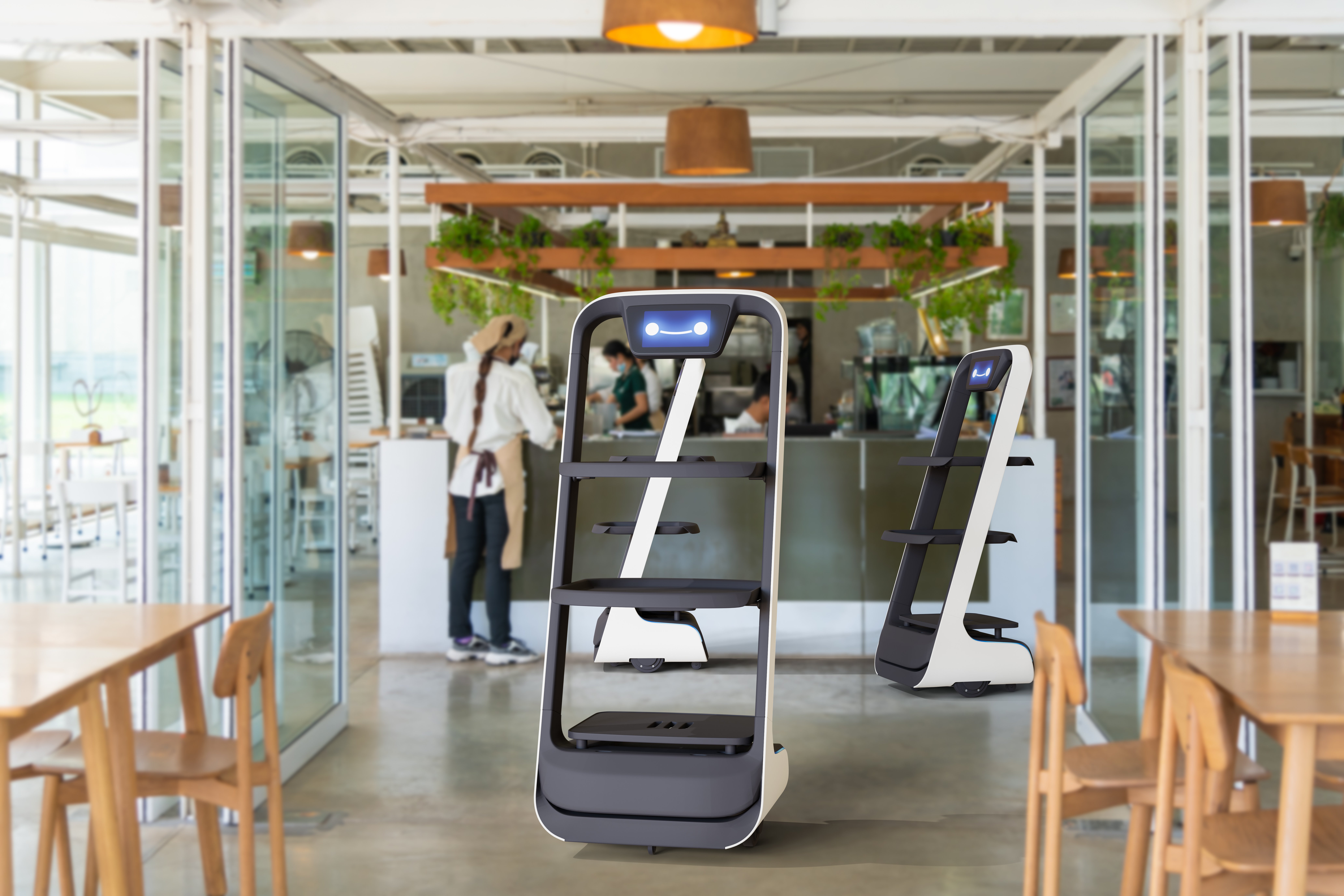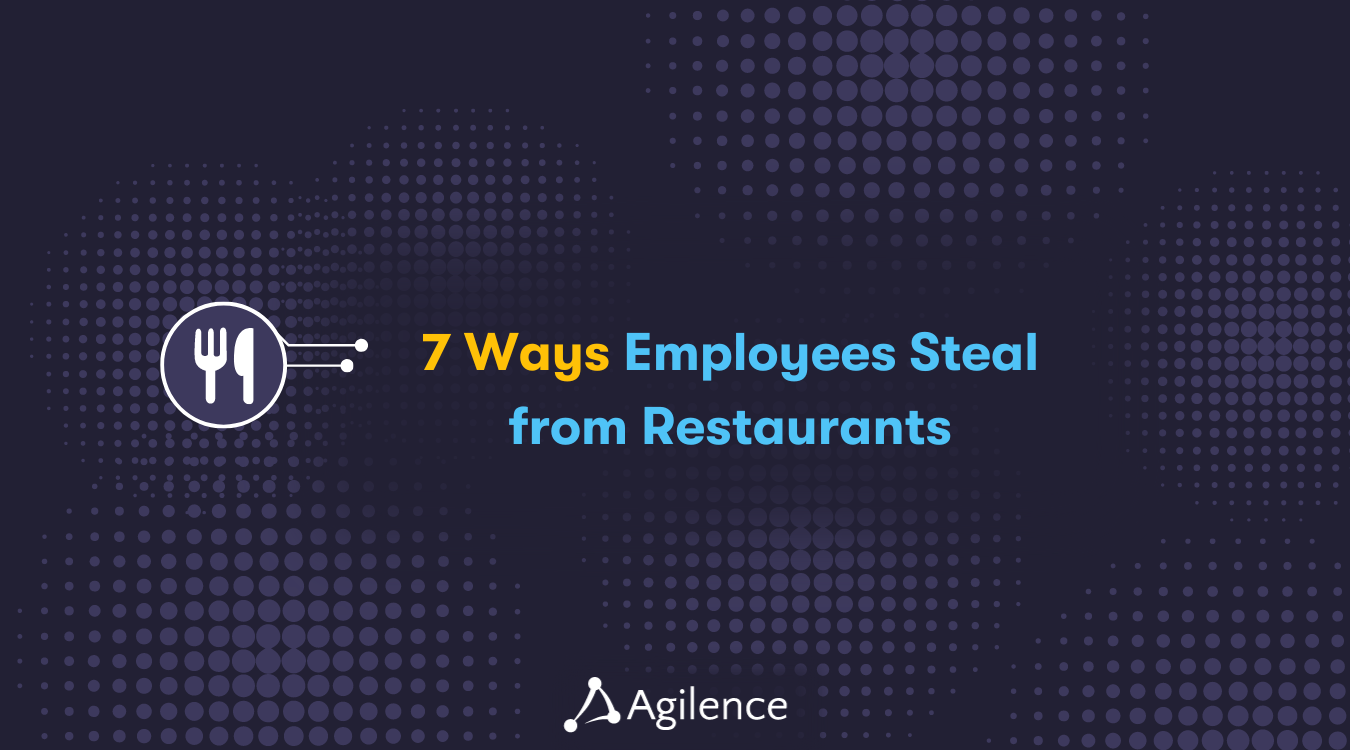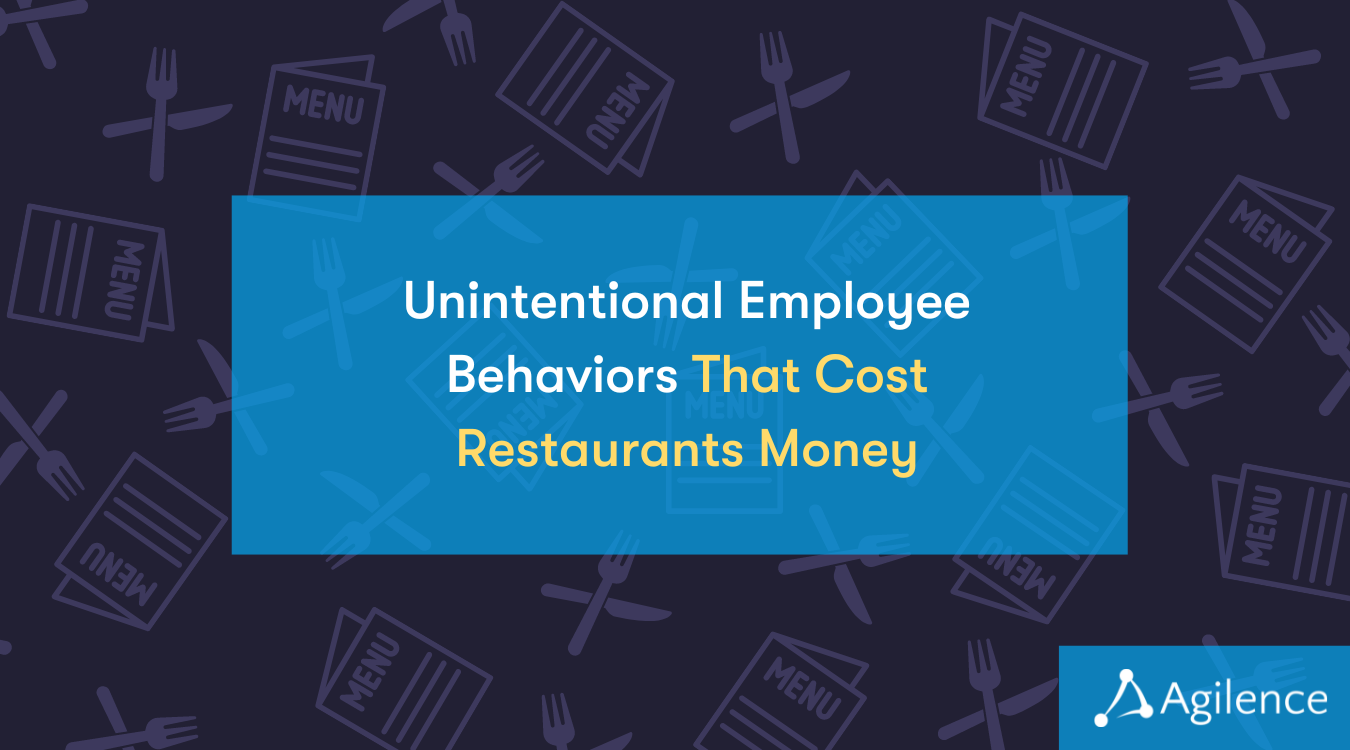How Restaurants Can Thrive During the Labor Shortage
Restaurant
Great employees are the core of any restaurant’s success. Technological advances can’t replace the human element of warm customer service and skilled food preparation. Yet three years after the pandemic, restaurants continue to struggle with the most severe labor shortage on record.
In this article, we explore the roots of the current restaurant labor shortage, how long it will last, and how it’s impacting restaurant margins. Then we’ll look at how restaurants can succeed despite the shortage by boosting recruitment and retention, maximizing their current labor resources, and leveraging technologies to improve efficiencies.
No matter where the labor market goes, restaurant owners and operators, whether in QSR, fast casual, or full-service, can continue to provide best-in-class dining experiences to their customers all while protecting and even improving their margins.
Why is There a Restaurant Labor Shortage?
While the restaurant industry has been grappling with a labor shortage for some time, the COVID-19 pandemic is the main factor which led to the current situation. When the pandemic hit, many restaurants were forced to lay off staff due to closures and slow business. Many restaurants and customers shifted their consumption habits to online ordering apps like DoorDash and Uber Eats, and the industry as a whole shifted to a new operating paradigm of more deliveries, more to-go orders, more adoption of new technologies, and less person-to-person contact.
As restrictions eased and restaurants reopened, some former employees were unwilling to return to work. Over two years later, the hospitality industry is facing a significant labor shortage, with nearly two million service jobs unfilled. Restaurant job openings comprise a good portion of these; as of January 2023, the Bureau of Labor Statistics reported that restaurant labor is still over 450,000 jobs short of pre-pandemic levels – the largest employment deficit among all US industries.
Many restaurants have learned to make do as they can. A November 2022 National Restaurant Association study found that 63% of full-service restaurants and 61% of limited-service restaurants are operating with fewer employees than they need to accommodate their guests. But the question remains: where have all the workers gone and why did they leave?
Where Did All the Restaurant Workers Go?
Even before the pandemic, the restaurant industry was known for relatively low wages and challenging working conditions. Long hours, high-stress environments, lack of benefits, and limited opportunities for advancement make it less appealing compared to other sectors. The pandemic has only highlighted these issues, causing many workers to rethink their career choices.
Many workers felt abandoned by their employers, as highlighted by this article from a longtime restaurant worker in Food and Wine Magazine, which expresses how the stress of the industry, combined with losing work during the pandemic, made them want to leave restaurants for good. A Toast survey found that low pay, bad managers, and limited growth are the primary causes of restaurant employee attrition. And according to a report released by Joblist, 38% of former restaurant workers surveyed stated that they would no longer be seeking work in the hospitality industry that fired them.
But what are restaurant workers doing instead? Many moved to other industries such as warehousing and delivery services which saw a boom during the pandemic, while many others have shifted to working online. According to the Washington Post, “Restaurants can’t find workers because they’ve found better jobs.” The article quotes a number of economists who claim that the service worker shortage is the result of a “deep, profound” shift in the economy away from sectors that have “person-to-person contact.”
The combination of high employee turnover, lingering health concerns, and burnout with career changes and deeper shifts in the American economy away from in-person service jobs make this labor shortage greater in scale and more structural in scope.
How Long Will the Restaurant Labor Shortage Last?
Predicting the exact duration of the labor shortage in the restaurant industry is challenging due to the number of variables at play. However, several indicators and expert opinions can provide some insights.
Given the factors listed above, the current restaurant labor shortage may not go away any time soon. Most industry experts predict that the labor shortage will not be a short-term issue. According to the National Restaurant Association, the industry may continue to face staffing challenges for several years.
The problem goes deeper than just the restaurant industry and impacts all sectors of the economy. According to the Society for Human Resource Management (SHRM), the labor shortage across the economy as a whole is forecasted to persist for years to come. Beyond the challenges of the service sectors, macro factors like demographics and an aging population play a role.
According to Svenja Gudell, Chief Economist at Indeed, "Demographic shifts and aging populations mean countries like the U.S. will experience an ongoing shortage of workers and hiring will remain challenging for years. Without sustained immigration or a focus on attracting workers on the sidelines of the labor force, these countries simply won't have enough workers to fill long-term demand for years to come."
However, there is some good news. Many economists agree that 2023 will be a “return to normal” for the labor market. The number of job openings has already begun to decline from its 21-year high last year. Although total job openings for the restaurant industry remain elevated, the aggregate number of hires and separations (the churn in the workforce) has settled back down to pre-pandemic levels, and the number of job openings has declined in 2023 compared to the previous two years.
It's important to note that recovery rates vary significantly by region and type of restaurant. For example, fine dining establishments in urban areas are facing a slower recovery than fast-food chains in suburban locations. According to the National Restaurant Association, full-service restaurants have the largest deficit from pre-pandemic staffing levels. Recovery also varies greatly by state. As of August 2023, 21 states and the District of Columbia still had fewer eating and drinking place jobs than they did in August 2019.
With fears of a recession looming, what happens next is anyone’s guess. Long-term structural factors ensure the restaurant labor shortage won’t be solved quickly, but current trends are moving in the right direction. As of October 2023, it appears that the restaurant labor shortage is beginning to ease up and some power is being shifted back to employers. Additionally, many restaurants are learning to work with less by leveraging technology and new systems.
How the Labor Shortage Impacts Restaurant Margins
The restaurant labor shortage doesn’t just add stress to operations in-house – it can lead to a variety of effects that directly lower margins. While all restaurants live and die by their margins, it can hit quick-service franchisees especially hard. Typically, franchisees pay a percentage of revenue as royalties to the franchisor, with the average being 5.2 percent. When profits on goods sold tighten, these revenue-based royalty fees can become a large burden for franchisees.
Here are some of the ways the labor shortage impacts margins:
- Increased Operating Costs. Labor shortages often lead to increased wages as restaurants compete for a smaller pool of workers. This rise in labor costs raises a restaurant’s prime cost (its controllable expenses), which directly eats into profit margins.
- Reduced Operating Hours. Many restaurants, including all of the major QSR chains, have had to reduce their operating hours (and in many cases menu offerings) due to the lack of workers. This reduction in service hours and menu options decreases restaurant sales and profitability.
- Price Increases. To offset the increased labor costs, many restaurants are raising their prices. While this can help maintain profit margins in the short term, it risks alienating customers and reducing demand in the long term.
- Supply Chain Disruptions. The labor shortage is also causing supply chain bottlenecks, leading to increased costs and operational challenges.
- Poor Customer Experience. A survey by the National Restaurant Association found that 65% of operators did not have enough employees to meet customer demand. This can result in slower service and a poorer customer experience, potentially impacting customer loyalty and repeat business.
- Closure of Restaurants. In extreme cases, the labor shortage is forcing locations, especially of independent restaurants, to close down permanently.

How to Succeed Despite the Restaurant Labor Shortage
Whether the restaurant labor shortage drags on for years or begins to resolve, restaurants can succeed. There are three key areas when it comes to thriving during the dearth of new workers:
- Boosting recruitment and retention to attract the new workers in the labor market while retaining the employees you currently have
- Maximizing the effectiveness of your current labor force
- Leveraging technology to improve operations and reduce your dependency on labor.
Let’s explore each of these one by one.
Boosting Employee Recruitment and Retention
Retaining staff should be a primary focus. Not only is it more cost-effective but can help your team build better connections and deepen the knowledge of your individual employees. However, turnover will always be high in the restaurant industry, so you need to boost your recruitment as well. In the face of a labor shortage, restaurants must adopt proactive strategies to both attract and retain talent. Here are a few key areas to focus on:
Create a Positive Work Environment
No matter what industry, everyone wants to work in an environment where they feel respected and appreciated as a valued part of a team. Fluctuating customer demand and high employee turnover can easily create a high-stress and low respect work environment, but this can be overcome by a purposeful attempt to create a positive culture. And it starts at the top. This can be as simple as acknowledging employee contributions, ensuring managers have regular check-ins with employees, scheduling team building events, and emphasizing this value during the onboarding and training process.
Invest in Employee Development
Training not only equips employees with the skills they need to do their jobs effectively but also shows them that you're invested in their success, making them feel more valued and motivated to stay (as well as helps them avoid boredom in their role). Consider offering ongoing training programs to help employees continuously improve, learn new skills, and advance in their careers. This can lead to better performance and higher job satisfaction, reducing turnover rates. If there is a limit to the skills that are applicable to their role, consider subsidizing outside education opportunities, so that the employee’s continued education and advancement is connected to their role at your restaurant.
Offer Performance-Based Incentives
A positive work environment is important, but sometimes, you also need to put your money where your mouth is. Incentives tied to performance can motivate employees to excel in their roles. These could be monetary rewards for hitting certain targets, recognition for exceptional customer service, or promotions. When employees feel recognized for their hard work, they're more likely to stay with the company long-term. While this requires some spending, it can be worth it in the long run.
Improve Your Compensation Packages
This goes with the last point and applies both to retention and recruitment. It’s basic supply and demand – if workers are harder to attract and retain, you must pay more for the good ones. Competitive compensation (including benefits) is crucial in attracting and retaining staff. While wage increases can be effective, it's also worth considering non-monetary benefits that can enhance an employee's work-life balance. This could include flexible scheduling, paid time off, or opportunities for professional development. Good compensation is a mix of monetary and non-monetary benefits, and more flexibility with one can save you on the other.
Enhance Your Recruitment Strategies
Effective recruitment is the first step toward building a strong workforce. Obviously, your compensation package plays a big role in the candidates you can attract, but it’s not the only factor. A strong positive work environment as mentioned above will also attract candidates who see your restaurant as a place worth working. Consider broadening your recruitment channels to reach a wider pool of potential candidates. A strong referral program can incentivize current employees to recommend potential hires. You can also turn to a recruiter, and make sure to harness the power of online job boards, social media platforms, and even local community events to spread the word when you need to fill open positions.
Maximizing Your Existing Labor Force
Labor shortage or not, improving your labor efficiency is always important. But in light of the ongoing labor shortage, it's more important than ever for restaurant operators to maximize the use of that existing workforce. Here are some strategies that can help:
Standardize Training and Cross-Train Employees
Cross-training allows employees to perform multiple roles within the restaurant. For example, a server could be trained to also function as a bartender or host. This approach provides greater flexibility in scheduling and ensures that all essential roles can be covered, even when staffing levels are low.
For multi-location operators, the same goes for having a consistent training experience. To ensure a uniform customer experience, it's crucial to have a standardized training program for all employees, regardless of their location. This will not only ensure consistency in service but also make it easier to move staff between locations if needed.
Empower Employees
Empower your staff by giving them the authority to make decisions within their areas of responsibility. This not only frees up management's time but also makes employees feel trusted and valued, helping to boost morale and going with the retention and culture tips above. This also allows for less staff to get more done. Use a tool like Agilence to maintain oversight, ensuring employees are hitting their KPIs and detecting issues such as noncompliance with company policies or internal theft.
Centralize Tasks
For multi-location operators, centralizing tasks is key to maximizing efficiency. This means assigning specific duties to a central team rather than duplicating efforts across different locations. These tasks include inventory management, payroll processing, and marketing activities. By doing so, you can free up time for your on-site teams to focus on providing excellent customer service.
Streamline Operations by Analyzing Dayparts
Analysis of dayparts with a tool like Agilence Analytics can provide owners and managers with actionable insights into how they can optimize their meal service operations. Measuring metrics such as order accuracy, kitchen bump time, and production time by menu item, across different times of the day, can influence menu assortment, pricing strategies, ordering logistic accuracy, and effectively aid in the proper scheduling of staff.
You can leverage analytics to discover opportunities for improving efficiency across a variety of operational areas such as rethinking your menu to reduce prep time or redesigning your restaurant layout for better workflow. The more efficient your operations, the more you can accomplish with a smaller team.
Optimize Staff Scheduling and Labor Costs
Effective scheduling can help you get the most out of your existing workforce. Consider implementing software that can optimize schedules based on forecasted demand, employee availability, and skill levels. Such a system can help ensure that you always have the right number of staff at each location, improving service while controlling costs.
Using your existing restaurant data with a tool like Agilence to supplement labor planning makes shift scheduling a much “smarter” process and can help you avoid unnecessary labor expenditures and minimize overstaffing, understaffing, or employees “stealing time.” You can use Agilence to:
- Align staffing and business needs. Analyze sales by day of the week, revenue center, daypart, and more and increase or reduce staff on hand based on peak and downtimes.
- Avoid overtime. Receive alerts to employees approaching overtime so that you can optimize labor planning and remain compliant with your overtime policy.
- Analyze scheduled to worked hours. Evaluate staff attendance vs. their scheduled hours to learn if particular associates commonly leave you shorthanded.
- Detect time clock abuse. Review metrics to prevent restaurant fraud via manual timecard manipulation and non-worked hours by the server, as well as break down average break and shift length to ensure that your staff is not milking the clock.
While the labor shortage presents challenges, it also provides an opportunity for restaurants to rethink their operations and get the most out of their existing workforce. By focusing on cross-training, retention, development, efficiency, and empowerment, restaurant operators can navigate the labor shortage and set themselves up for success in the long term.

Leveraging Technology to Offset the Labor Shortage
Labor shortages and the adoption of new technology have always gone hand in hand. Restaurants are not the only industry facing a labor shortage which is accelerating the need to adopt new technologies in order to maintain operational efficiency. As new tools become integrated into operations, restaurant operators are able to do more with less.
However, implementing new technologies can require a period of transition for users to become acclimated and operations to stabilize. Here are some of the key restaurant technologies that can help owners and operators navigate these challenging times.
Automation
Automation can take over repetitive, time-consuming tasks, freeing up staff to focus on more important duties. For instance, self-ordering kiosks or mobile apps can handle customer orders, while AI-powered solutions can manage inventory or schedule shifts. This not only reduces the workload for staff but also improves accuracy and speed, enhancing the overall customer experience.
Particularly for QSRs and fast casual, robotic automation can augment workflows around food preparation and even delivery, and many major chains have already adopted such technology. Panda Express has developed and deployed a robotic Panda Auto Wok (PAW) that works 25% faster than manual ones. Miso Robotics’ Flippy 2 — a robot arm that works the fryer at fast-food restaurants — is already being used at Chipotle (modified to be an automated tortilla chip maker called Chippy), White Castle, and Wing Zone, among others. Restaurants of all sizes are trying out robotic waiters and busboys.
Digital Training Programs
Technology can also support staff training. Digital training programs allow for flexible, at-your-own-pace learning, which can be particularly beneficial in a busy restaurant environment. Online platforms can allow managers to track employee education, and workers can even complete educational materials while at home and on any device. They can also provide consistent training to all staff members, ensuring everyone is equipped with the necessary skills and knowledge.
Artificial Intelligence
No discussion of technology in 2023 would be complete without mentioning the potential of artificial intelligence (AI). For restaurant operators, generative AI tools can power a new generation of chatbots that allow customers to ask questions, navigate menus, place orders, and even pay. Chatbots can be integrated into other areas such as table reservations and booking for full-service restaurants and collecting customer feedback.
AI is also powering voice ordering systems which allow customers to receive service through natural language voice commands. Large brands such as Chipotle are already using AI voice assistants to take orders, but the technology still needs some time to develop before providing a truly seamless experience for all. With a shortage of service workers, AI assistants can help restaurants assist and serve more customers with fewer employees.
Online and Mobile Ordering Systems
Online and mobile ordering systems not only meet the growing demand for convenience but also reduce the need for front-of-house staff. By allowing customers to place orders digitally, restaurants can allocate more staff to food preparation and other back-of-house operations. Most restaurants have already adopted both in-house and third-party digital ordering and delivery solutions. However, third-party solutions, while convenient and exposing your restaurant to a larger customer base, can also create problems for margins. Learn about avoiding restaurant refund abuse through digital channels, especially third-party platforms.
Integrated Systems
Integrating various systems used in restaurant operations—like POS, inventory management, and employee scheduling—can streamline processes and improve efficiency. An integrated system provides a holistic view of the business, making it easier to identify areas of improvement and implement changes. For multi-location operators, it’s key to use cloud-based platforms which maintain a single source of data which can be accessed anywhere. Communication tools can keep teams aligned between multiple locations. Be sure to centralize tasks into a limited set of systems which can be used to manage operations, inventory, scheduling, financial data, and more across locations.
The Importance of Data
Data is an invaluable resource for any business, and restaurants are no exception. With the right data, restaurants can make informed decisions about everything from menu design to staffing schedules. For example, by analyzing sales data, a restaurant might identify peak times and schedule staff accordingly to ensure optimal service. Similarly, analyzing customer feedback data could highlight areas for improvement and inform training programs.
Many restaurants use a variety of systems for different aspects of their operations, such as POS systems, inventory management systems, and scheduling software. However, these systems often operate in silos, making it difficult to get a holistic view of the business. By integrating these disparate systems, restaurants can gain a comprehensive understanding of their operations and identify opportunities for efficiency and improvement.
Agilence Analytics can help restaurant operators address this challenge. By pulling data from a broad set of data sources, including POS systems, inventory, alarm, store, HR, IoT, and other business applications into a single, user-friendly platform, Agilence provides a unified view of the business, enabling owners, managers, and operators to easily analyze data, identify trends, and make data-driven decisions.
Agilence's powerful reporting capabilities allow restaurants to monitor key performance indicators and receive alerts when there are significant deviations. This can help restaurants quickly identify and address issues, improving operational efficiency and profitability.
Agilence can also help restaurant owners and operators directly lower labor costs by:
- Comparing employee performance metrics to identify high and underperformers
- Detect employee fraud and theft to increase profits
- Understand online sales and ordering fulfillment to increase margins
- Revising hiring and training practices to minimize turn-over costs
- Analyzing sales by day, channel, and daypart to optimize scheduling
Learn more about Agilence restaurant analytics here.
Related Articles

7 Ways Employees Steal from Restaurants
Employees are the core of any business, but this is especially true in restaurants. It is the service industry after all. Alt...
Unintentional Employee (and Manager) Behaviors That Cost Restaurants Money
While employee theft is the biggest contributor to shrink in restaurants, it’s not the only employee behavior hurting restaur...
7 Restaurant Technology Trends for 2023
It’s no secret the last few years have been filled with challenges for the restaurant industry, leaving many operators hoping...Subscribe to our blog
Receive free educational resources like exclusive reports, webinars, and industry thought leadership articles straight to your inbox.

